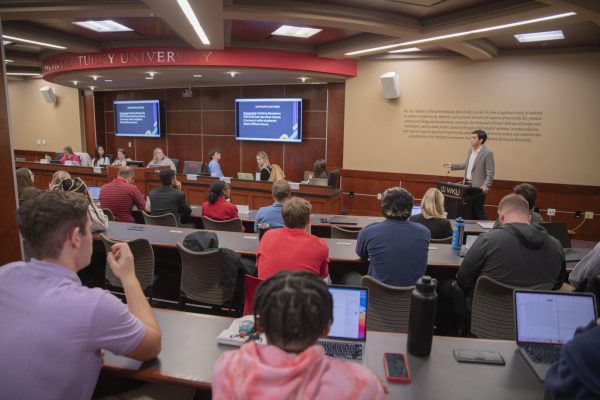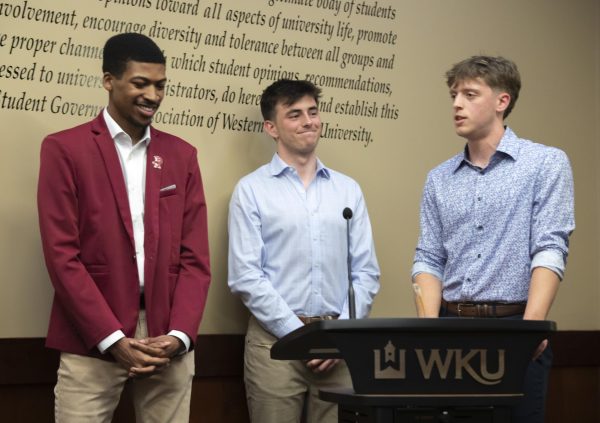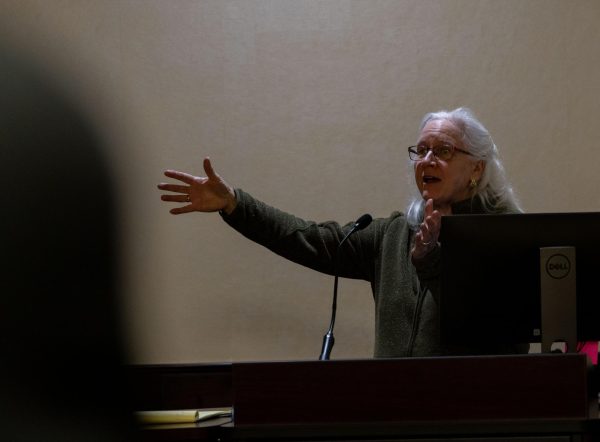Administrators start filling $7.7 million gap
May 7, 2015
Administrators are now tasked with finding $7.7 million for the university budget, a job compounded by an eight year drought in state funding and declining enrollment at WKU.
Totaled together, increased expenditures and fixed cost increases lead to a $9.6 million gap that the university needs to cover, and currently, WKU will have only $1.9 million of net gain from a tuition increase to fill the gap.
The university lost $15.4 million since 2008, as state appropriations stagnated each year.
The biggest factor in this reallocation process, however, is scholarships, President Gary Ransdell said.
Budget increase for academic scholarships will grow an additional $3.9 million to fund freshmen scholarship acceptance for the fall 2015.
“We knew that more and more students were accepting scholarship offers, maybe even to a bit of a surprise and in a positive way we had a 30 percent increase in scholarship acceptances,” Ransdell said.
This increase comes with a cost. Ransdell said the university is not likely to grow scholarship numbers starting in the fall 2016 semester, and the university “will have to live in the scholarship budget we have.”
“We’ve become the destination point for Kentucky’s brightest students but we have to pay for that,” Ransdell said.
Provost and Vice President for Academic Affairs Gordon Emslie said administrators had braced for a possible financial situation.
“We were monitoring for the past few months to evaluate how significant it was going to be, but the final number was a little larger than we expected,” he said.
In faculty senate meetings throughout the semester, the potential for merit-based salary increases had been discussed by Emslie and other administrators. However, budget reallocations hinder that possibility as the funds administrators hoped to give to faculty must now go toward the overall $7.7 million.
“I don’t think realistically at this point, with the budget reallocation we face, there’s room to add another pool,” Emslie said. “… It’s still a high priority for me but it’s a significant challenge at this time.”
There is no word as to whether jobs will be lost or preexisting open slots will be filled, Ransdell and Emslie said.
“There could be some job loss, but that would possibly be departmental rather than across the board,” Ransdell said.
Final tallies of empty positions won’t be known until late July, Emslie said.
“Obviously this is one area we have to look at, to what extent we can fill vacant positions.” he said. “… There will be a lot of faculty who retire early typically is well into July until we’re aware of the final number … I do not anticipate termination of existing employees at this point.”
Ann Mead, senior vice president for finance and administration, said via email that the scholarship budget increases proposed don’t include the added awards that are allocated by the College Heights Foundation and the WKU Foundation.
Even those supplementary funds can’t alleviate the importance of raising tuition and fees.
“We believe next year’s tuition increase is absolutely necessary,” Mead said. “Our projected fixed cost increases do exceed the projected increase in tuition revenue to fund these increases.”
Facilities and infrastructure aspects will see a reduction thanks to the reallocation. The “central funds” mentioned in Ransdell’s initial email announcement to faculty and staff includes the Facilities Reserve for one-time campus improvements. The reserve is being reduced by $800,000 to reduce the impact of the base reallocation on the smaller divisions, Mead said.
Mead echoed Ransdell and Emslie, saying WKU has taken steps to prevent students and university jobs from being harmed too much by the budget cuts.
“We have always placed a priority on protecting the students in terms of academic offerings and ability to complete degree programs in a timely manner,” she said. “We have placed a priority to keep position eliminations to a minimum as well.”

























